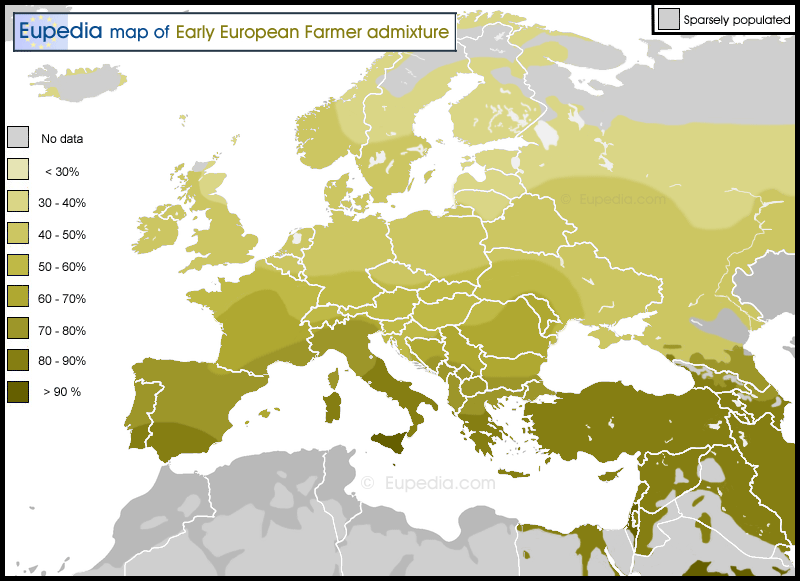bicicleur 2
Regular Member
- Messages
- 6,367
- Reaction score
- 1,401
- Points
- 113
This is the Brandt et al analysis of ancient mtDna. I know we now have more samples, but maybe this can serve just to get the discussion going.

The total lack of the "U" lineages in the early Neolithic goes along with the findings that there was virtually no H/G introgression in the early phases of the Neolithic in Europe. The uptick in the Middle Neolithic could correlate with the uptick in WHG ancestry in late Neolithic and Copper Age Europeans. Interestingly, that occurs before the changes to mtDna brought about by Corded Ware and Bell Beaker, which, if you're using just those lineages labelled Early Bronze Age, aren't very large. (Some of those are obviously "EHG" type lineages.)
The problematic lineage is "H", given those somewhat controversial Mesolithic "H" samples in Iberia, and the later high frequencies of "H" in Neolithic Portugal. It will be very informative to see what specific lineages of "H" were present in the Anatolian Neolithic. Most importantly, was there "basal" H1 and H3? When we have that information it will be much easier to figure out if, whether or not a few very basal "H" lineages made it to Iberia in the Mesolithic, the vast majority of it is Neolithic Near Eastern, and which sub-lineages went "west" to go with the EEF into Europe "early", and which "H" and other lineages (U3?) went east into the Caucasus, then the steppe and only then entered Europe from the east.
it is strange, 5500-3500 BC 'early neolithic' and H are moving in opposite direction as if they were 2 competing groups
after 3500 BC U moves in again
and what about LN/EBA, they don't strike me as specific Yamnaya, Yamanya looks more like U + 'early neolithic' in terms of mtDNA
U was probably native to the steppe since LGM, so would some group crossing the Caucasus just prior to Yamnaya have brought the 'early neolithic' to the steppe ?
there is still to much guessing involved
furthermore since 2200 BC there is a comeback of H at the expense of all other mtDNA lines
how could that be explained?










